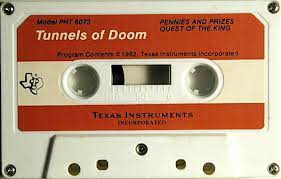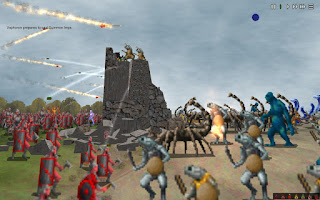Still
disagreeing about things. Today Jose is attempting to disagree with me about the thing that is hardest to explain on the character sheet: Alignment. Specifically he said "Any D&D campaign loses a lot of flavor and depth by not using a system of alignment. "

Zak
Ok, so alignment.
I feel like, with a new player, when you are trying to explain alignment and stick it on a PC you have done way more to explain how D&D works than you have done to describe the character. In real life, people want things--they want to think of themselves as kind and they want a creme brulee and they want to not go to Hell, etc--and they want some things more than others and that's pretty much all of morality.
If you use alignment, you're trying to shoehorn a pretty simple thing to explain (what does your PC like?) into an artificial scheme for no real benefit. It's not just unrealistic, it seems like a system-specific piece of work you're doing which, on the other side, doesn't automatically spit out interesting results.
Your turn.
Jose
I prefer to approach alignment as the classic conception of where is the PC positioned in a struggle between cosmic powers rather than just as a mere moral compass (although the side you pick has moral implications, of course). On that note, I think, that the way the alignment is treated in a specific campaign helps to convey that campaign's flavor and overarching "cosmology" better than pages and pages of info dump. That's why I encourage people to use their one system of alignment if law-chaos or law-chaos-good-evil doesn't do it for the idea they have in mind.
Also, having alignment as a mechanic has the advantage of giving enemies, magic items, and such one more trait you can play with that is widely used and compatible with other people's stuff (if you use the vanilla version or one that is easily convertible).
Zak
1. that seems to assume a cosmology with only two poles: the Good god and the Bad god. That seems quite poorly adapted to a world where Zeus could easily pick a fight with Odin
2. The knock-on effect on compatibility with classic D&D modules and supplements is an issue, but in most cases these are easily replaced with equivalent bits that refer to allegiance rather than alignment. So instead of a Lawful Good-aligned sword you get an Odin-aligned sword, etc
Jose
Yeah, that's why I too prefer a broader conception of alignment. Be it Norse Gods vs. Greek Gods vs. Egyptian Gods, civilization vs. barbarians, red vs. blue vs. green, or anything of that sort. Which is why I am mostly in favor of alignment mechanics rather than the classic one or two axis system of alignment of D&D. Again, I think they are a quick and efficient way to deliver setting information and add depth to the mechanics.
But I am also not against the classic use of alignment, which is cool if you want something with a big good vs. evil thing going on, Moorcock style; but it's not a cure-all and a lot of times it's been shoehorned into settings where it works to their detriment. But that is not a problem with alignment, it's a problem with not being able or willing to use alignment better.
And I am against using alignment to police the behavior of the PCs. I think it should be a suggestion and they should be mostly in line with it, but sometimes it gets ridiculous. I think the turning point was the addition of the Paladin in 1e and it's only gotten worse with the years.
Zak
If you prefer a "broader conception" what do you mean?
Like, not 9 alignments?
Jose
Yeah, I think there are more ways to do alignment that can serve a given campaign world better. Things like having a numbered scale from law to chaos, or the 5 colors of Magic the Gathering, the colors in Carcosa (people do like using color for this, huh?), or the different realms of power in Ars Magica, or just having 12 deities with different relationships and having everything be aligned with one of them. These all-encompassing cosmic factions can also arise organically as the game progresses, but I think having a general idea laid out from the beginning with game mechanics is useful.
Zak
Ok, tell me more
Jose
Well, I don't think this would have to apply to every game, but D&D, at the end of the day, is about being part of an archetypical pre-modern world from our viewpoint. Of course the real Middle Ages were a lot more complex, but this is still an elf-game. And a huge chunk of the way we perceive that world is one of great cosmical struggle, God vs. the Devil in Christian Europe, for example. And it was something everyone was very aware of and also felt as something deeply personal. That's why I think alignment as a mechanic usually makes a D&D campaign better: if you want the players to care about something in an RPG, the best way to do it is to give it mechanics that affect their success. And having them involved in some kind of confrontation between cosmical powers right from the beginning does a lot to sell the fake Middle Ages.
Or any other pre-modern-like setting.
Zak
Well it seems the issue has split:
1. The traditional 9-point or 3-point axis. You seem to be down on that, like me.
2. A different things: a faction system, only cosmic and with rules. You seem to like that but what would it be for D&D?
3. Then there's the advantage of being able to use old materials with zero translation--which use the 9 or 3 pt system. But your preference in 2 above seems to preclude that
.
So: what's going on here?
Jose
Well, I think the 9/3 point-axis alignment is serviceable and I do use it. The problems I have with it are mostly ones of implementation.
The first one being that it is used to heavily monitor character behavior; for an alignment system, I prefer one that tells you certain things you cannot do or that you should do, much like the Shugenja taboos in Oriental Adventures or just having the cleric having to make some sacrifice or ceremony to regain spells and having them differ by alignment or forbidding you from collaborating with people of the opposite alignment, or, as D&D already does, making you the objective of certain magical effects.
It think that has more flavor and produces better game than expecting for a player to do something that falls outside a very loosely defined moral system and then say "aha! You lose all your powers".
So that's the way I would implement it in a certain campaign, even if you use good ol' Law/Neutrality/Chaos, sit down and think about what behavior you want to reward and punish for each of the three and what would be the actual "dogmas" for that.
The fun part is that, this way, what the players actually want in the short or long term can be in conflict with their alignment, so they have to choose one or go around it. And having concrete rules makes it more engaging than just having the paladin leave the room while you torture a guy. Also, it adds a new level of strategy, since everything has an alignment and it means they are bound by the same rules. So if you steal the Scepter of Orcus and want to sell it back to him, you know he won't be able to accept the deal if there is a rule that says that no Chaotic entity can buy or sell from a Lawful one, but you can still find workarounds, like hiring a neutral third party as a go-between. That kind of things.
Zak
That specfic implementation that you just described though--it has the same problems we were discussing before:
1. You have to describe the PC, at creation in terms of a game system rather than in terms of what they want or who they're allied to
2. It lumps Zeus and Odin (or other affiliations) together
Jose
Yeah, that's why I think customization is key in this regard. If you want something more like the medieval world or Moorcocks' multiverse, the 9-axis does fine. But for things that go deeper into polytheistic territory (as vanilla D&D has been steadily doing throught it's history), I would certainly refocus alignment to give more focus to different pantheons and adapting their respectives "dogmas" and interrelations. If we are going full age of mythology, you could have each pantheon (Greek, Norse, Demons and devils, Elf gods, etc.) being one axis of the alignment and good-evil being the other, so Odin and Loki are not lumped together either. But that is one example, of course, if you played something inspired by the Polynesian Mythos, for example, it would have make a bit more sense to have a scale between pure and impure. At the end of the day, yes, it makes the classical alignment hard or impossible to adapt, but it is a trade-off, not unlike banning certain classes or races from your campaign or making new ones to fit.
Zak
So how is that much different from just having factions and loyalties (as I was describing) but with numbers pinned on?
Jose
Yeah, at the end of the day, I'd say that's very much my definition of alignment. With the concrete behavior component added in.
Zak
So you like the numbers. Or at least specific categories. So, quickly--just re-rundown the advantage of the numbers.
Jose
If you want players to care about something that abstract as alignment, the best way to do it is to make mechanics for it, so it can affect them in day-to-day play. Having everything have an alignment and being aware of it is important, of course. But also using the stick and carrot of taboos and obligations to make the players act according to what the universe expects from them. Otherwise, it tends to devolve into the kind of play where everyone has to guess what's the DM's definition of "good" and "lawful" and have long winded arguments about it without getting anywhere.
Zak
Ok, but why not just have specific taboos, like 3 per faction?
Seems more concrete, memorable, enoforceable. "Devotees of Odin cannot flee bad weather" etc
Jose
Yeah, that's what I had in mind, but maybe because my concept of alignment is a tad too broad. But one important thing is that I would still require everyone to choose an alignment, much like a clan in Vampire or the like. So it's not just the cleric running into thunderstorms while the rest of the party just sighs.
Zak
So you want some kind of factional choice with an attached rule--doesn't have to be numerical?
Jose
Yeah. And I'd say that, if it is on a cosmical level, not just mundane politics, I would call that an alignment. What can be numerical, if desired, is the alignment itself, with some actions pushing it in different directions.
"Well, you killed all those children, you are 3 points closer to evil".
But that is just one way of many.
Zak
One strike against that is that it requires new players to be familiar with the cosmology of the game
If it's not super-obvious or borrowed from a familiar mythology, you're back to having to explan the minutiae of the game rather than jump right in
Jose
I think it's the opposite. I think the good thing about having alignment is that you can just tell them "look, there are these 2~10 factions, this is roughly what they are about, what they can offer you and what they want you to do". And I think that is more concise and engaging to the players than a long block of test about the setting almost no one wants to read to play. And later, as you organically find out more about them, you can possibly change your mind.
Zak
I mean without an alignment system you can just do neither though. No text, no score, just roll stats and go,
Jose
You can always start without alignment and let them decide later on. 0-level funnel style where you don't even have a class or letting them pick extra languages later as they find out what languages are important. But, in the end, I think the main reason why alignment is cool it's because it is a tool for immersion. RPG players are (on average) western, born in the XX or XXI century, middle-class and of high education. That's not the type of person that can easily tap into the kind of magical thinking that makes for great fantasy gaming (among other things).
Zak
Well I like the idea of starting with no knowledge of cosmology or faction and easing players into it
However, how would you actually do it, if alignment required numbers and stuff--when would you have them make the choice?
Jose
Well, if you are not an alignment fundamentalist like me, you could just let them choose whenever they wanted to start having the benefits and drawbacks. In the most basic way it could be like Dark Souls: you find a powerful NPC of that faction and it offers you to join. Other options include forcing them to choose at level 2 or any time they go up a level. If you are specially lawful evil, you can give them the boons of their alignment every time they go up a level, so, the more time it takes them to decide, the less they will get.
This discussion is actually very interrelated with another one "how and when does the cleric choose their deity".
Zak
Ok, but which position are you arguing for? You said you're a fundamentalist--so you obviously have a preferred position. What is it, specifically?
Jose
Well, I was joking, but I prefer doing it at char gen. Mostly because I think that, even if the players can discover other things about the world by play, I think usually most of them would have some notion of what the alignments are. I mean, even the animals have one.
Zak
So what exactly is the alignment system you use?
Jose
Well, it depends. For example, one campaign I am DMing is kitchen sink D&D, so I use the classic 9 axis alignment with clear descriptions of what good and law are in that particular world. I have different pantheons, but since it is very pulp-y, I have settled for the fact that alignment is more important for the gods than who belongs to their pantheon or not.
On the other hand I also have a campaign set in a magical version of medieval Spain, where I use 7 alignments (the mundane, God, the Devil, magic, myth, the supralunar and the underworldly) and I give players extra powers and taboos by belonging to one or the other. God-aligned or Devil-aligned characters have to be always extra good or evil, but they get the coolest stuff. Underworldly characters only have to do minor things like being underground if they can, but only get small perks like always knowing in what level of a dungeon they are. But the ones that are not mundane or with God or the Devil can actually find patrons of their alignment later on that give them more powerful stuff... for a price.
Zak
Ok, so your original statement was:
"Any D&D campaign loses a lot of flavor and depth by not using a system of alignment. "
But the asterisk seems to be that "sytem of alignment" is a pretty flexible phrase that could encompass anything from good-bad to factions so long as it has some rules attached
Jose
Yeah, that's why I covered my bases saying "a system".
Zak
I suppose I buy it on some level, but is simple greed an alignment?
Jose
I would argue that simple concepts can be alignments, such as civilization vs. barbarism. But the thing is that you need to give it an structure with many NPCs that are all about greed to really make it a faction. And you need other powers to go against greed directly or indirectly. Otherwise it wouldn't be really an alignment in the literal sense of the word, you have to be align with someone or against something.
Zak
I mean simply: lets say (as is often the case) you have a bunch of PCs who are all out to just get lots of xp in the form of gold.
That's their goal. Have we lost a lot of flavor and depth by just letting them be that? Do they need allegiances? Or is that just a nice option?
Jose
I think that you would lose flavor and depth yeah. Both in the setting and mechanically. But I don't think it's necessary, much like political factions or wilderness travel or beholders. You can remove them and some campaigns clearly don't need them, but it adds a lot to most.
Zak
I'm not denying it adds meat--I think you're right that factions are interesting as are a cosmology. I just don't know where the line between "nice to have" and "you lose so much more than you gain you should definitely have it" is.
Without a mechanical faction/alignment system, things are simpler and faster and easier to pick up. With one the world is more interesting and you have a wider variety of interesting choices. Each has an advantage.
Jose
They do. I personally think the benefits of having alignments are superior to the speed lost in chargen, but that's probably personal preference. To make a counterpoint against myself, what I really think that balances the two choices is the fact that D&D as is doesn't support alignment that well mechanically, so the DM has to do a lot of stuff from zero to make it really shine.
Zak
Well I think we've nailed down what's important. Anything to add?
Jose
Yeah, I think alignment is like wilderness travel, in that sense. Before the OSR, it was really shitty and nobody knew how to do it, so most people didn't or didn't do it right. But, with the years, a lot of smart people started thinking about it until the procedures mostly got sorted out. I think allignment might be in that same larvarian stage right now, it just need a little more cooking.
And I think that's mostly it.
Zak
Alright! Thanks Jose!
Jose
Thanks to you!


























































